-
 Bitcoin
Bitcoin $106,731.2224
-1.05% -
 Ethereum
Ethereum $2,444.9804
-1.20% -
 Tether USDt
Tether USDt $1.0003
0.01% -
 XRP
XRP $2.1882
0.09% -
 BNB
BNB $651.1435
-0.61% -
 Solana
Solana $148.3252
-2.09% -
 USDC
USDC $1.0000
0.01% -
 TRON
TRON $0.2787
0.55% -
 Dogecoin
Dogecoin $0.1598
-3.16% -
 Cardano
Cardano $0.5520
-2.43% -
 Hyperliquid
Hyperliquid $39.0960
-2.64% -
 Bitcoin Cash
Bitcoin Cash $516.9519
2.98% -
 Sui
Sui $2.7011
-2.95% -
 Chainlink
Chainlink $13.0582
-1.71% -
 UNUS SED LEO
UNUS SED LEO $8.9250
-2.53% -
 Stellar
Stellar $0.2359
-0.18% -
 Avalanche
Avalanche $17.3856
-3.73% -
 Toncoin
Toncoin $2.8095
-3.56% -
 Shiba Inu
Shiba Inu $0.0...01121
-1.95% -
 Litecoin
Litecoin $85.2795
-0.85% -
 Hedera
Hedera $0.1471
-2.15% -
 Monero
Monero $319.8004
1.12% -
 Dai
Dai $1.0001
0.01% -
 Ethena USDe
Ethena USDe $1.0001
0.02% -
 Bitget Token
Bitget Token $4.5344
-1.07% -
 Polkadot
Polkadot $3.3224
-2.96% -
 Uniswap
Uniswap $6.9697
-2.75% -
 Aave
Aave $266.1658
-2.25% -
 Pepe
Pepe $0.0...09414
-3.41% -
 Pi
Pi $0.4913
-3.29%
What is the difference between Kraken's limit order and market order? Which is more cost-effective?
On Kraken, market orders execute quickly but may have slippage, while limit orders offer price control but no execution guarantee. Choose based on market conditions and goals.
May 03, 2025 at 04:43 am
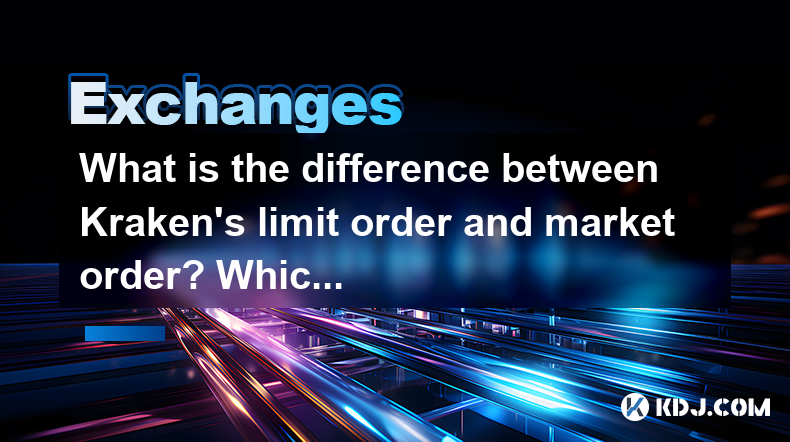
When trading cryptocurrencies on Kraken, users often encounter two main types of orders: limit orders and market orders. Understanding the differences between these two can significantly impact your trading strategy and costs. In this article, we will delve into the specifics of each order type, analyze their cost-effectiveness, and provide detailed insights to help you make informed trading decisions.
Understanding Market Orders on Kraken
A market order on Kraken is an instruction to buy or sell a cryptocurrency at the best available price in the market at the time the order is placed. When you place a market order, the transaction is executed immediately, ensuring that you get the cryptocurrency or fiat currency you want without delay.
- Execution Speed: Market orders are known for their high speed of execution. They are ideal for traders who want to enter or exit a position quickly.
- Price Certainty: While market orders guarantee execution, they do not guarantee a specific price. The price at which your order is filled can vary, especially in volatile markets.
- Slippage: This refers to the difference between the expected price of a trade and the price at which the trade is actually executed. In highly volatile markets, slippage can be significant, leading to higher costs.
Understanding Limit Orders on Kraken
A limit order on Kraken allows you to set a specific price at which you want to buy or sell a cryptocurrency. The order will only be executed if the market reaches your specified price. This gives you more control over the price at which your trade is executed.
- Price Control: With a limit order, you have the advantage of setting the exact price you are willing to pay or accept. This can be particularly beneficial in volatile markets where prices fluctuate rapidly.
- Execution Uncertainty: Unlike market orders, limit orders do not guarantee execution. If the market does not reach your specified price, your order may not be filled.
- Partial Fills: In some cases, your limit order might be partially filled if only a portion of your order can be executed at your specified price.
Comparing the Cost-Effectiveness of Market and Limit Orders
The cost-effectiveness of using a market order versus a limit order on Kraken depends on several factors, including market volatility, trading strategy, and personal risk tolerance.
- Market Volatility: In a highly volatile market, using a market order can lead to significant slippage, making it less cost-effective. On the other hand, a limit order can help you avoid buying at a peak or selling at a trough, potentially saving you money.
- Trading Strategy: If your strategy focuses on quick entry and exit from positions, market orders might be more suitable. However, if you are looking to buy or sell at a specific price, limit orders can be more cost-effective.
- Risk Tolerance: Traders with a lower risk tolerance might prefer limit orders to ensure they are not caught in sudden price swings. Those with a higher risk tolerance might opt for market orders to capitalize on rapid market movements.
How to Place a Market Order on Kraken
To place a market order on Kraken, follow these steps:
- Log into your Kraken account: Ensure you are logged in to your Kraken account.
- Navigate to the trading page: Go to the trading section of the platform and select the cryptocurrency pair you want to trade.
- Select 'Market' order type: On the order form, choose 'Market' as the order type.
- Enter the amount: Specify the amount of cryptocurrency or fiat currency you want to buy or sell.
- Review and submit: Double-check your order details and submit the order. The transaction will be executed at the best available market price.
How to Place a Limit Order on Kraken
To place a limit order on Kraken, follow these steps:
- Log into your Kraken account: Ensure you are logged in to your Kraken account.
- Navigate to the trading page: Go to the trading section of the platform and select the cryptocurrency pair you want to trade.
- Select 'Limit' order type: On the order form, choose 'Limit' as the order type.
- Enter the price and amount: Specify the price at which you want to buy or sell, and enter the amount of cryptocurrency or fiat currency you want to trade.
- Review and submit: Double-check your order details and submit the order. The order will be executed if the market reaches your specified price.
Factors to Consider When Choosing Between Market and Limit Orders
When deciding between a market order and a limit order on Kraken, consider the following factors:
- Market Conditions: Assess the current market conditions and volatility. In stable markets, market orders might be more cost-effective, while in volatile markets, limit orders can offer better price control.
- Trading Goals: Define your trading goals. Are you looking to buy or sell quickly, or do you want to ensure a specific price?
- Order Size: Consider the size of your order. Larger orders might have more significant slippage when using market orders, making limit orders a better choice.
- Liquidity: Check the liquidity of the cryptocurrency pair you are trading. Higher liquidity can reduce the risk of slippage with market orders.
Frequently Asked Questions
Q: Can I cancel a limit order on Kraken if it hasn't been filled yet?
A: Yes, you can cancel a limit order on Kraken if it hasn't been filled yet. To do so, navigate to the 'Orders' section of your account, find the limit order you want to cancel, and select the 'Cancel' option.
Q: What happens if my limit order is only partially filled on Kraken?
A: If your limit order is only partially filled on Kraken, the remaining portion of your order will stay active until it is either fully filled or canceled. You can monitor the status of your order in the 'Orders' section of your account.
Q: Does Kraken charge different fees for market and limit orders?
A: Kraken's fee structure is based on the trading volume and the type of account you have, rather than the type of order. Both market and limit orders are subject to the same fee schedule, which can be found on Kraken's website.
Q: Can I use stop orders on Kraken, and how do they differ from market and limit orders?
A: Yes, Kraken supports stop orders, which are used to limit losses or protect profits. A stop order becomes a market order once the stop price is reached, while a stop-limit order becomes a limit order at the stop price. Stop orders differ from market and limit orders in that they are triggered by a specific price level rather than being immediately executed or waiting for a specific price.
Disclaimer:info@kdj.com
The information provided is not trading advice. kdj.com does not assume any responsibility for any investments made based on the information provided in this article. Cryptocurrencies are highly volatile and it is highly recommended that you invest with caution after thorough research!
If you believe that the content used on this website infringes your copyright, please contact us immediately (info@kdj.com) and we will delete it promptly.
- Powell, Stablecoin Regulation, and Circle's Bold Move: A New York Minute on Crypto's Future
- 2025-07-02 02:30:12
- Ethereum Price, Tom Lee, and Bitcoin: A New Era for Crypto?
- 2025-07-02 02:30:12
- Hoskinson, Ripple, Cardano DeFi: A New Era of Collaboration?
- 2025-07-02 02:35:12
- BlockDAG, ALGO, and the Crypto Trends Shaping 2025
- 2025-07-02 01:50:12
- Cold Wallet, Token, Gains: Is CWT the Smartest Crypto Move?
- 2025-07-02 01:10:12
- Pi Coin's Rocky Ride: Support Levels, Recovery Timeline, and What the Experts Are Saying
- 2025-07-02 01:10:12
Related knowledge
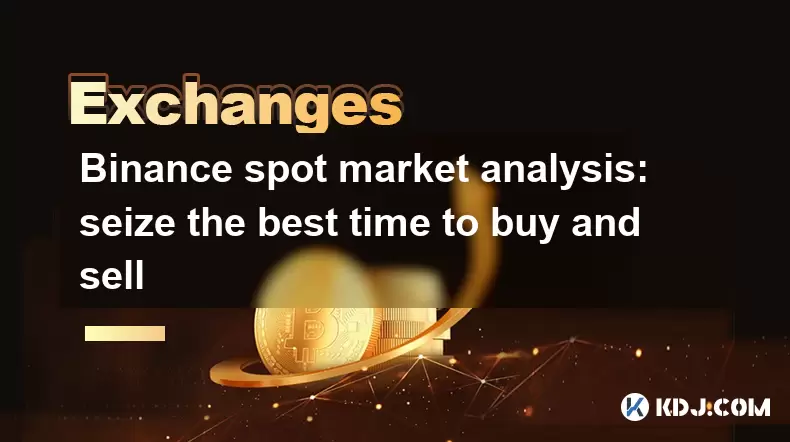
Binance spot market analysis: seize the best time to buy and sell
Jun 19,2025 at 04:56pm
Understanding the Binance Spot MarketThe Binance spot market is one of the most popular platforms for cryptocurrency trading globally. It allows users to trade digital assets at current market prices, making it essential for traders aiming to buy low and sell high. Unlike futures or margin trading, spot trading involves direct ownership of the asset aft...
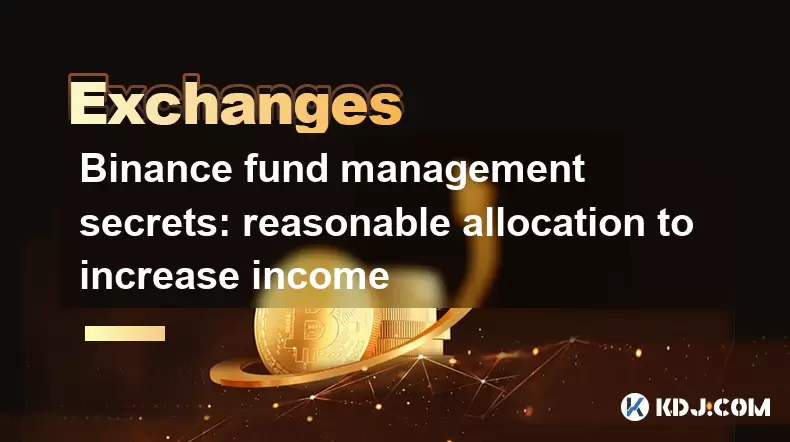
Binance fund management secrets: reasonable allocation to increase income
Jun 22,2025 at 02:29pm
Understanding Binance Fund ManagementBinance fund management involves strategic allocation of your cryptocurrency assets to optimize returns while managing risk. The key to successful fund management lies in understanding how different investment options on the Binance platform can be utilized to create a diversified portfolio. This includes spot tradin...
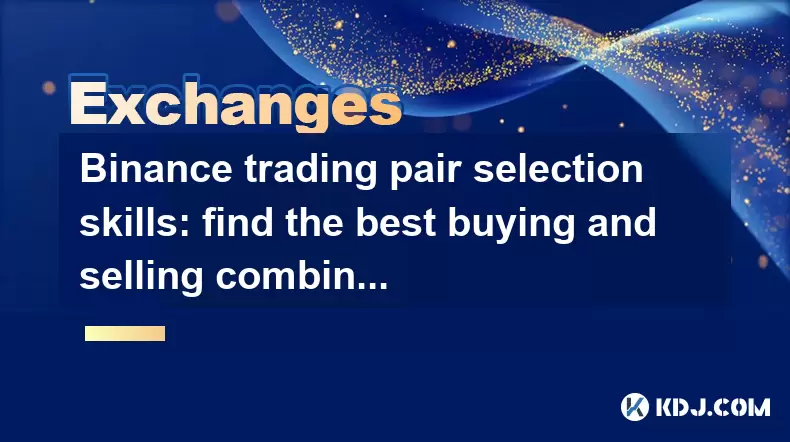
Binance trading pair selection skills: find the best buying and selling combination
Jun 23,2025 at 02:49am
Understanding the Basics of Trading Pairs on BinanceBefore diving into trading pair selection skills, it's essential to understand what a trading pair is. On Binance, a trading pair refers to two cryptocurrencies that can be traded against each other. For example, BTC/USDT means Bitcoin is being traded against Tether. Each trading pair has its own liqui...
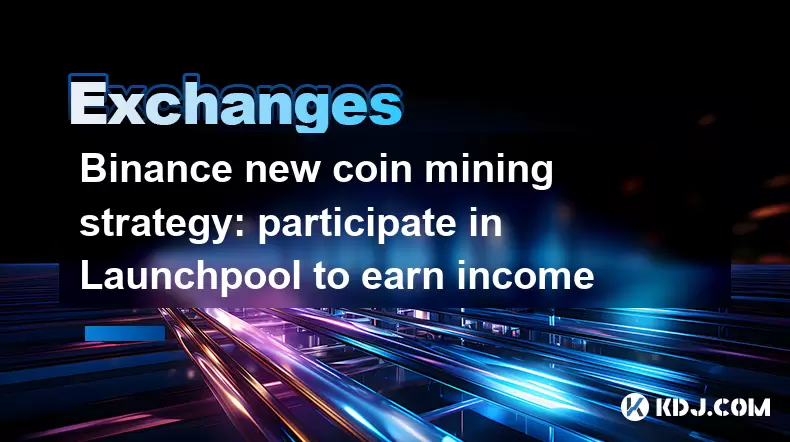
Binance new coin mining strategy: participate in Launchpool to earn income
Jun 23,2025 at 11:56am
What is Binance Launchpool and how does it work?Binance Launchpool is a feature introduced by the world’s largest cryptocurrency exchange, Binance, to allow users to earn new tokens through staking. This platform enables users to stake their existing cryptocurrencies (such as BNB, BUSD, or other supported assets) in exchange for newly launched tokens. T...
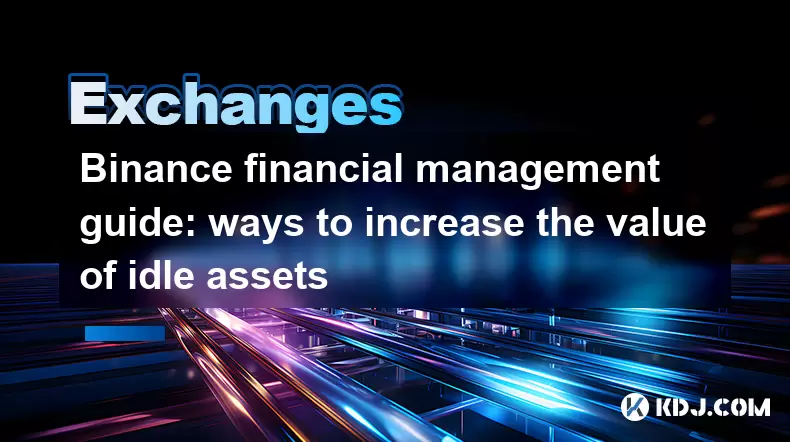
Binance financial management guide: ways to increase the value of idle assets
Jun 19,2025 at 11:22pm
Understanding Idle Assets in the Cryptocurrency SpaceIn the fast-paced world of cryptocurrency, idle assets refer to digital currencies that are not actively being used for trading, staking, or yield farming. Holding these funds in a wallet without utilizing them means missing out on potential growth opportunities. Binance, as one of the leading platfor...
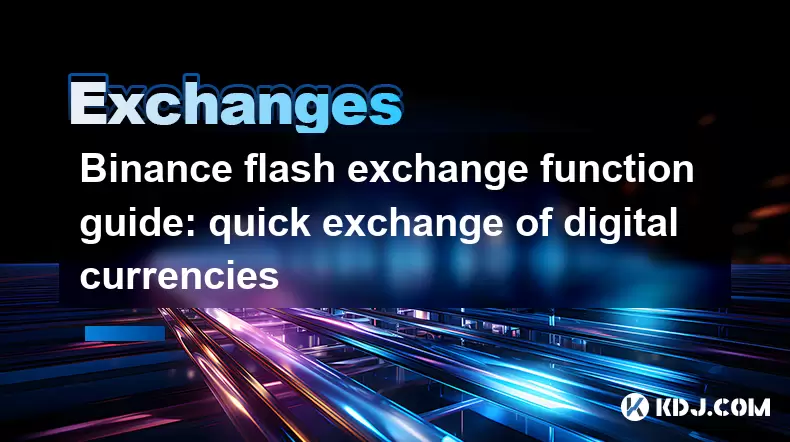
Binance flash exchange function guide: quick exchange of digital currencies
Jun 23,2025 at 12:29pm
What is the Binance Flash Exchange Function?The Binance Flash Exchange function is a powerful tool designed to allow users to instantly swap between supported cryptocurrencies without the need for placing traditional buy/sell orders. This feature simplifies the trading process by offering a direct exchange mechanism, eliminating the requirement to conve...

Binance spot market analysis: seize the best time to buy and sell
Jun 19,2025 at 04:56pm
Understanding the Binance Spot MarketThe Binance spot market is one of the most popular platforms for cryptocurrency trading globally. It allows users to trade digital assets at current market prices, making it essential for traders aiming to buy low and sell high. Unlike futures or margin trading, spot trading involves direct ownership of the asset aft...

Binance fund management secrets: reasonable allocation to increase income
Jun 22,2025 at 02:29pm
Understanding Binance Fund ManagementBinance fund management involves strategic allocation of your cryptocurrency assets to optimize returns while managing risk. The key to successful fund management lies in understanding how different investment options on the Binance platform can be utilized to create a diversified portfolio. This includes spot tradin...

Binance trading pair selection skills: find the best buying and selling combination
Jun 23,2025 at 02:49am
Understanding the Basics of Trading Pairs on BinanceBefore diving into trading pair selection skills, it's essential to understand what a trading pair is. On Binance, a trading pair refers to two cryptocurrencies that can be traded against each other. For example, BTC/USDT means Bitcoin is being traded against Tether. Each trading pair has its own liqui...

Binance new coin mining strategy: participate in Launchpool to earn income
Jun 23,2025 at 11:56am
What is Binance Launchpool and how does it work?Binance Launchpool is a feature introduced by the world’s largest cryptocurrency exchange, Binance, to allow users to earn new tokens through staking. This platform enables users to stake their existing cryptocurrencies (such as BNB, BUSD, or other supported assets) in exchange for newly launched tokens. T...

Binance financial management guide: ways to increase the value of idle assets
Jun 19,2025 at 11:22pm
Understanding Idle Assets in the Cryptocurrency SpaceIn the fast-paced world of cryptocurrency, idle assets refer to digital currencies that are not actively being used for trading, staking, or yield farming. Holding these funds in a wallet without utilizing them means missing out on potential growth opportunities. Binance, as one of the leading platfor...

Binance flash exchange function guide: quick exchange of digital currencies
Jun 23,2025 at 12:29pm
What is the Binance Flash Exchange Function?The Binance Flash Exchange function is a powerful tool designed to allow users to instantly swap between supported cryptocurrencies without the need for placing traditional buy/sell orders. This feature simplifies the trading process by offering a direct exchange mechanism, eliminating the requirement to conve...
See all articles

























































































